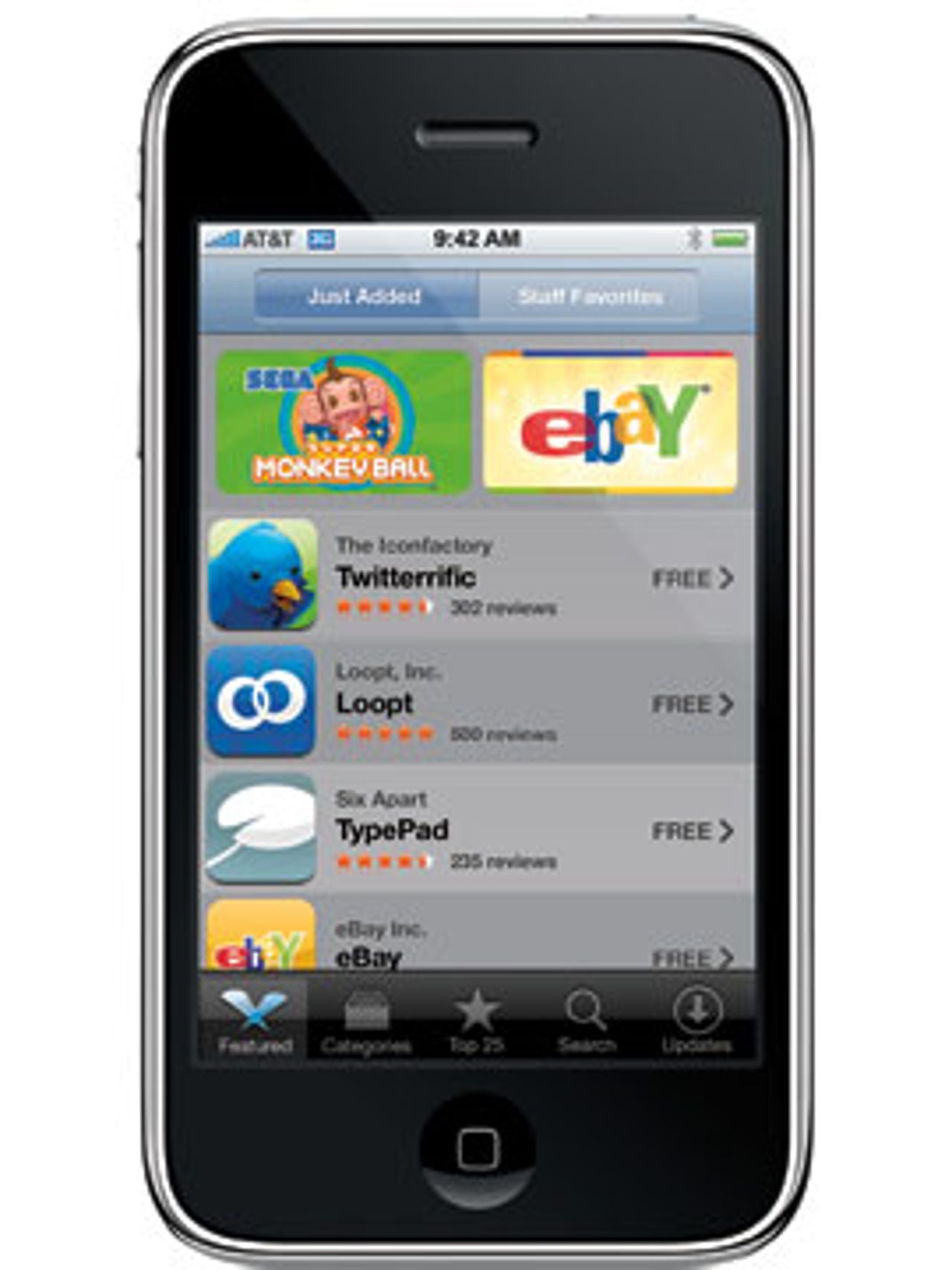Photos: Five of the best touchscreen mobiles


Touch me...
No, Apple did not invent touchscreen technology - though you'd be forgiven for thinking otherwise considering how every touch-loving smart phone is now benchmarked against the iPhone. That said, Jobs and co did arguably reinvent the touch concept for mobiles by opting for capacitive touchscreen tech rather than the more common resistive variety.
Capacitive touchscreens have a top layer that stores electrical charge. When the user touches the screen this charge decreases, as some of it is transferred to his or her finger, and capacitors embedded in the device are then used to calculate where the touch took place (hence the iPhone's fingertip sensitivity and the fact it's no good for stylus lovers). The iPhone actually uses a whole grid of capacitors which means it can sense multiple touches so users can indulge in fancy fingerwork like pinching to shrink webpages.
The 3G device (pictured here showing off Apple's iPhone App Store) may be the second generation iPhone but it is the iPhone proper: the device as it should always have been, packing the kind of speed other phones had been offering for ages as well as the now near-ubiquitous GPS.
Verdict: Setting the standard
Photo credit: Apple
But hold on one hot minute... If there's a brand that can rival Apple in the coolness stake it's Google, and shown here (in 'iPod white' no less) is what can be colloquially called the 'Google phone' aka the G1 - the first smart phone running Google's Android mobile OS platform.
The device is actually made by Taiwan's HTC - a company that has a whole family of touchscreen phones in its portfolio albeit with Windows Mobile inside. While HTC's usual fare can be an acquired taste, the G1, like the iPhone, has a truly touchy-feely capacitive touchscreen. Plus it has haptic feedback - to let the user know when the device has registered their actions.
For those who want to have their cake and eat it, there's a full, slide out Qwerty keyboard hiding under the screen too.
Verdict: A contender
Photo credit: HTC
And talking of hot, so hot it's not even out yet (but will hit UK shops early next year) Nokia has finally come up with a touchscreen phone of its very own.
Expect the Nokia 5800 XpressMusic to ooze build quality, as per usual with Nokia high end offerings, though the Finns have plumped for a resistive touchscreen (hence the stylus) - albeit probably a very well implemented one. It runs the latest iteration of Symbian's S60 OS too - so even more shiny and new. Nokia also claims it will support Flash video - unlike the iPhone.
The 5800 will also be one of the first devices to have Nokia's Comes With Music service so users will get free unlimited music downloads too. For the more business-minded user, it's got Microsoft Exchange email support too.
Verdict: Quality first
Photo credit: Nokia
Following Apple's lead comes the Samsung Omnia - an iPhone-a-like for all the stylus-wielding Windows Mobile lovers out there.
The Omnia's stand out feature is its 5 megapixel camera that's 3 better than the iPhone. Otherwise it's got all the usual features you'd expect: GPS, HSDPA and so on.
Verdict: Dull but worthy
Photo credit: Samsung
It may have passed everyone by but Palm has been doing touchscreen gadgets for donkey's years - aeons before the iPhone was even a twinkle in Steve Jobs' eye - so no touchscreen round-up would be complete without a nod to Palm.
It's still regularly refreshing its Treo range and keeping its options open with both Palm OS and Windows Mobile devices.
Pictured here is its latest offering - the Palm Treo Pro - which comes with a little bit of Bill Gates inside.
If you like to mix things up when it comes to input systems the smaller touchscreen and easy-access front-mounted full Qwerty keyboard take a 'best of both worlds' approach which has long been popular with senior execs.
Verdict: Enterprise class
Photo credit: Palm